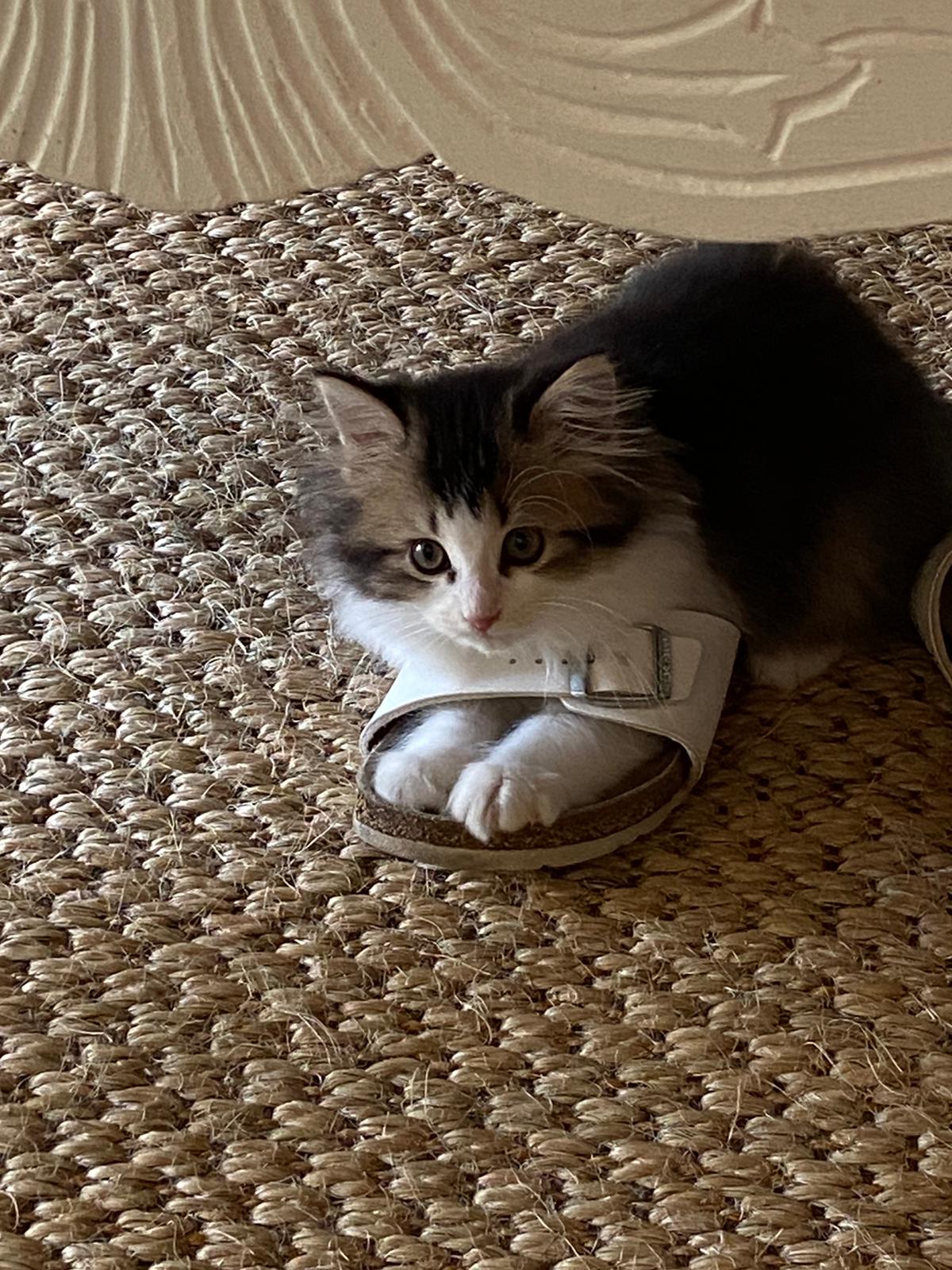The Playful World of Feline Folly: Understanding Why Cats Act Silly
In the vast expanse of the internet, one cannot help but stumble upon countless videos featuring our feline friends exhibiting quirky and often downright silly behavior. From pouncing on invisible foes to chasing shadows, cats seem to have an uncanny ability to entertain us with their antics. Nevertheless, have you ever wondered why cats act this way? Cats’ inherent curiosity is a defining characteristic of their nature, one that often leaves us both amused and bemused. This curiosity is deeply rooted in their evolutionary history as skilled hunters and predators.
Natural Hunters
Cats are innately born hunters, carrying within them the legacy of their wild ancestors who relied on acute senses, agility, and stealth to secure their prey. These instinctual traits have seamlessly transitioned into our domesticated feline companions. Their captivation with movement, whether it be a fluttering curtain, a darting insect, or the flicker of a candle flame, is a direct result of their ingrained drive to track and pounce on potential prey. This penchant for pursuit and ambush tactics is deeply rooted in their evolutionary history. Even within the safe confines of our homes, this hunting instinct remains a powerful force, manifesting in the way a cat’s eyes lock onto a moving target and their entire body tenses in anticipation of the hunt. It’s a behavior steeped in precision, with stalking and pouncing as their signature moves. This calculated approach mirrors the strategies their wild ancestors employed to capture swift and agile prey. Additionally, their extraordinary sensory perception, from keen vision in low light conditions to sensitive whiskers and specialized ears, further enhance their hunting prowess. These traits, honed over generations, serve as the foundation for the captivating and sometimes comical behaviors we observe in our feline friends. Through play, they not only indulge their hunting instincts but also refine their coordination, agility, and precision. Understanding and appreciating these instincts allows us to provide enriching environments that cater to their natural behaviors, fostering a deeper connection between our beloved feline companions and us.
Sensory capabilities of cats
Cats stand out in the animal kingdom for their extraordinary sensory capabilities, the result of both evolutionary adaptation and intricate biological features. Their acute hearing is a well-documented marvel, allowing them to perceive frequencies ranging from 48 Hz to an astonishing 85 kHz, far beyond the range of human hearing, which spans from 20 Hz to 20 kHz. This finely tuned auditory system grants them the ability to pick up even the faintest of sounds, a crucial trait for their hunting prowess. In fact, scientific studies have demonstrated that cats possess an uncanny ability to precisely pinpoint the source of a sound within a fraction of a degree, a feat attributed to their highly mobile ears.

Complementing their remarkable auditory senses is their specialized vision, finely attuned to both low-light conditions and rapid motion tracking. Their eyes, relatively large in proportion to their head size, afford them an expansive field of vision. Furthermore, the adaptability of their pupils, capable of constricting to a slit in bright light or dilating to a wide circle in darkness, enables them to regulate the amount of light that enters their eyes. These features, combined with a densely packed retina rich in rod cells, result in superb night vision. Scientific investigations estimate that cat’s eyes are approximately six times more sensitive to light than those of humans.
Beyond vision and hearing, cats possess a heightened sensitivity to motion, a crucial adaptation for a predator. Their retinas house a high concentration of motion-detecting cells, allowing them to track prey or objects in motion with exceptional precision. This specialization facilitates their ability to respond swiftly to even the slightest movement in their surroundings.
Moreover, cats’ whiskers, or vibrissae, are specialized touch receptors that provide them with detailed information about their environment. These whiskers are exquisitely sensitive to touch, capable of detecting minor air movements. This tactile sense is particularly crucial in low-light conditions or when navigating confined spaces.
Numerous scientific studies have delved into the intricacies of feline sensory perception. Research published in the Journal of Comparative Physiology A, for instance, illuminates the remarkable precision with which cats can localize sounds. Furthermore, studies in the fields of animal behavior and neuroscience have unveiled the intricate neurological pathways and brain regions involved in processing sensory information in cats.
Problem-Solving Skills
In their ceaseless exploration and interaction with their surroundings, cats frequently find themselves in novel situations that offer valuable opportunities for problem solving and learning. Consider, for example, when a cat endeavors to retrieve a toy lodged beneath the sofa or attempts to unravel the mystery of opening a door. In these moments, their cognitive abilities come to the forefront as they methodically assess the situation, strategize potential approaches, and ultimately employ a sequence of actions to achieve their goal. This intricate problem-solving process serves as a dynamic mental exercise, fostering adaptability and resourcefulness in cats as they become increasingly adept at navigating and conquering the challenges posed by their environment.
Mental Stimulation
Much like physical exercise, mental stimulation is of paramount importance for a cat’s overall well-being. Participating in playful activities, even those that may appear whimsical to us, serves as a means to keep a cat’s cognitive faculties keen and engaged. This mental engagement is crucial in preventing boredom, which can be a precursor to undesirable and potentially destructive behaviors in cats. Moreover, engaging in stimulating play provides them with a gratifying sense of achievement, particularly when they triumphantly “hunt” down a toy or adeptly solve a puzzle. This sense of accomplishment not only bolsters their confidence but also contributes to a content and fulfilled feline companion, highlighting the significance of mental enrichment in their lives.
Expressing Themselves
Communication in cats is a nuanced language, one primarily expressed through their behaviors. Within this repertoire, curiosity emerges as a potent form of self-expression. When a cat engages in activities like investigating a novel object, peering intently into an empty box, or ardently chasing a fleeting beam of light, they are manifesting their innate inquisitiveness. This behavior is a window into their restless desire to engage with and comprehend their environment. It is as if they are extending an invitation to us and other animals in their surroundings, signaling their heightened state of alertness and readiness for action. In these moments, they are not only exploring the physical world but also actively engaging in a silent dialogue, sharing their curiosity and enthusiasm for discovery with those who share their space. This form of expression, though subtle, is a vital component of the rich tapestry of feline communication, offering us a glimpse into their dynamic and ever-curious inner world. Cats are renowned for their self-reliant and independent disposition. Unlike some other pets, they possess a unique ability to entertain themselves without constantly depending on human interaction. Their innate penchant for exploration, chasing, and investigation means they can stay engaged and occupied even in the absence of their human companions, who may be preoccupied or away. This self-sufficiency is a striking testament to their adaptability and resourcefulness. They demonstrate a remarkable knack for finding amusement in the simplest of things, be it a crumpled paper ball, a sunbeam streaming through a window, or the enticing rustle of leaves outside. This independent streak is a defining trait of their character, allowing them to thrive in various environments and circumstances, and underscoring the multifaceted nature of our feline friends.
Dogs have their own charming behaviors, but the internet’s love for funny cat videos stems from the special mix of instinct, curiosity, and social interaction that characterizes feline behavior. When we grasp the reasons behind their actions, it deepens our enjoyment of their playful antics. So, the next time your cat chases shadows or playfully ‘attacks’ unseen adversaries, keep in mind that it’s their way of embracing their natural instincts, all while reveling in the coziness of home.






